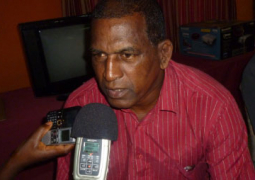The Governor of Central Bank of The Gambia (CBG) has revealed that as at end-December 2011, the total outstanding domestic debt stock grew to D9.4 billion (28.0% of GDP) from D8.7 billion in December 2010 (an increase 8.6%).
Amadou Colley made this disclosure Thursday while presenting the annual report and financial statement of the Central Bank of The Gambia for the year ended 2011 to the joint session of the Public Accounts/Enterprises Committees of the National Assembly.
“This increase was mainly driven by Treasury Bills accounting for 75.0 percent of the total outstanding domestic debt,” he stated.
According to the CBG Governor, this is contrary to the government debt management strategy of restructuring the domestic debt from short-term to medium to long-term securities.
“At the end of December 2011, the commercial banks held the bulk of Treasury bills accounting for 83.52 percent of the stock compared to 79.24 percent a year ago,” Colley stated, adding that the non-bank holdings accounted for 14.92 percent compared to 26.76 percent December 2010.
“The increase in commercial bank holdings of Treasury bills could be largely attributed to Social Security and Housing Finance Corporation (SSHFC), a major non-bank public investor’s failure to re-invest their matured bills during the period under review,” he said.
He noted that SSHFC’s holding of Treasury bills, as a percentage of the stock of debt, declined to 1.43% in 2011 from 6.18% in 2010”.
Revenue and Grants
The CBG Governor also revealed that the total revenue and grants for 2011 amounted to D5.2 billion (16.1% GDP) compared to D5.0 billion (17%) of GDP) in 2010
“Domestic revenue rose by 6.9% to D4.2 billion. About D3.7 billion was collected from taxes, of which D1.8 billion (47.8%) came from international trade taxes,” he said, adding that this was supported by an increase in the sales tax on imports of 5.1% which slightly offset the decline in duty on oil and non-oil products of 3.7%.
The grants received, he noted, stood at D1.0 billion (3.1% of GDP, D44.7 million) below the previous years’ figure and represents just over 50% of what has been projected for the year.
Expenditure and net lending
Governor Colley further revealed that total expenditure and net lending in 2011 was estimated at D6.1 billion (18.8% of GDP), growing by just over one and a half per cent relative in 2010.
“Total current spending for the year amounted to D4.4 billion (13.6% of GDP), an increase of D520 million from last year’s level,” he further disclosed.
“Other charges constituted the largest component of current budget amounting to D1.9 billion,” he noted.
Development in the domestic economy
Economic activity in The Gambia, he went on, remains strong despite the global economic crisis.
“Real GDP growth was 3.3% in 2011 compared to 5.5% in 2010. Agricultural output grew at a slower pace of 4% compared to 12.1% in 2010 reflecting the protracted and inadequate rains that affected crop production,” he stated.
Development in the global economy
“Growth in the global economy has been steadily declining despite moderate recovery in some advanced economies and strong performance in emerging and developing economies, consistent with earlier forecast s of a possible faltering of global recovery in 2011,” he added.
Monetary Development
The Governor of the Central Bank also told members of the PAC/PEC that over the years, sustaining price stability has been the prime focus of the monetary policy in The Gambia.
Meanwhile, the PAC/PEC committee members raised concerns, comments, questions, recommendation and suggestions before adopting the report.
Read Other Articles In Article (Archive)
Today's Editor Faces False Publication Charges
Jun 15, 2009, 6:49 AM




